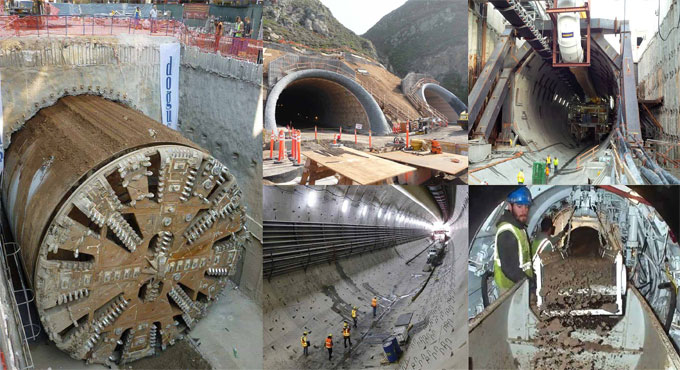NEWS | SOFTWARE | SHEET
Tunneling, its methods and safety
To create an underground passage that passes through hill, under building or roads, under water or under entire cities Tunnels are required. It is a civil engineering structure that plays a vital role to go across obstacles, provide connection under the sea, and provide sewage system and many more.
Without tunneling these works or essentials cannot be done. Tunnels can be used in a wide range that depends upon scale of the tunnel, groundwater condition and the availability of space.
The major concern things are required :-
Purpose of using Tunneling: Before using the tunnel first know the purpose of using tunnels and cross-section of the tunnel.
Ground form and shape: This influence to lookout the route for the tunnel and whether it is economical or feasible to construct where there may be poor conditions of defects in strata.
Constriction planning: The planning will help to see depending on the type of tunnel. The ground conditions, the tunnel length required and the timings of project.
Removal of debris: The Size and length of the tunnel will determine the equipment is necessary for mucking out debris.
Control of water: This is major factor that required. Pumping is the most common technique for dealing with the presence of water whilst.
Tunneling Methods :-
Drill and Blast: This is generally required for the hard rock where digging is not possible, and was very common before the development of tunnel boring machines (TBM).
Road headers: These machines are used for the track-mounted excavating that have powerful cutting booms and are commonly used in coal mining or civil engineering works.
Open-cut method: Open-cut is generally involves the construction of an open trench which the tunnel is constructed. It’s depends upon the ground conditions, the side walls may be constructed before the trench is created.
Cut and Over: It basically required for creating the roof slab of the tunnel first, within a shallow trench.
Immersed- tube method: This method is appropriate for tunnels that cross deep water or prepared trench at sea or river.
Safety :-
Tunneling always required while working at height, in confined spaces, sprayed material and the operation of heavy plant. So, for that reason there is careful risk assessment and risk management and a high level of training and supervision are required.
There were several safety schemes for personnel and the British Tunneling Society has produced a Code of Practice for management of risk in tunnel work or the embracing of which required by insures.
For additional info view the video:
Lecturer: Maccaferri World


